








fter more than 20 years of relentless campaigning, the Transport Workers Union (TWU) has achieved a monumental victory. Starting this August, a dedicated road transport stream of the Fair Work Commission (FWC) will be established to set minimum standards throughout supply chains and the transport gig economy. This new legislation ensures that employees, owner drivers, and gig workers alike will benefit from a standard-setting system, and TWU has secured a guaranteed seat at the table to advise the expert panel of Commissioners on these standards.
This achievement is a world first and represents a significant transformation for the transport industry. It marks the end of the unfair practices that saw some transport workers being paid a fraction of others due to complex legal manoeuvring. Now, the pressures that drive operators to the brink of collapse and place workers in dangerous situations will be scrutinised and held to account.
The transport gig economy, often criticised for exploiting workers, will now be regulated with minimum enforceable standards. This legislation will eliminate the push for companies to engage in a race to the bottom, improving the lives and livelihoods of all transport industry workers and, most importantly, saving lives.
The TWU's campaign was nothing short of inspiring. Convoys of truck drivers, couriers, gig workers, bus drivers, and their families travelled across the country, participated in vigils, protests, sit-ins, marches, strikes, lobbied politicians, signed petitions, and shared their stories to fight for change.
This campaigning to make change in our industry is necessary. In 2023 alone, 235
By Tim Dawson | Branch Secretary
people were killed in transport-related crashes, including 54 truck drivers and four transport gig workers. Since 2016, the year the Coalition abolished the Road Safety Remuneration Tribunal, more than 1,500 people have died in truck crashes in Australia – one person killed every two days. The economic cost of this crisis was estimated at $27 billion a year in 2021, but the true cost in human lives is incalculable.
The severity of the crisis united the entire transport industry. The TWU led the charge, supported by road transport employers,
This legislation will eliminate the push for companies to engage in a race to the bottom, improving the lives and livelihoods of all transport industry workers and, most importantly, saving lives
owner-driver associations, and even major retailers like Coles and Woolworths, as well as gig companies like Uber, DoorDash, and Menulog. These companies, often seen as disruptors, recognised the need for enforceable standards to end the dangerous conditions in our industry.
This unprecedented industry consensus
was crucial in passing the legislation. The support of gig companies, secured through months of tough negotiations and the sharing of workers' stories, provided the final, irrefutable piece needed to push the reform through Federal Parliament.
The dedication and solidarity of TWU members have been instrumental in this victory. Now, the hard work begins to use this powerful tool to address the most pressing issues in transport. The alliance of workers, employers, owner driver representatives, and employer associations has been reconvened to tackle prolonged payment times that financially strain transport operators and owner drivers. Ensuring food delivery riders have fair pay and conditions is also an urgent priority.
The legislation marks a new era for the transport industry, but not all companies are on board. Aldi, for example, has been criticised for its poor treatment of transport workers and resistance to negotiating a transport Enterprise Agreement. The TWU is ready to take action against Aldi to ensure they meet the new standards.
Amazon, too, is under scrutiny for its exploitative practices through the AmazonFlex model, which imposes inhumane delivery deadlines and low pay. The TWU is prepared to use the new legislation to fight against these exploitative practices and ensure that all transport workers are treated fairly and safely.
This historic legislation is a testament to the power of collective action and the unwavering commitment of the TWU and its members. The fight for a safer, fairer transport industry continues, and with this new framework in place, real change is within reach.



By MURALI NATAKAM, Head of Cyber Security, TCS Australia and NZ
s a major trading nation, Australia relies heavily on secure and efficient logistics operations to facilitate international trade.
As the industry embraces the transformative power of 5G technology, the urgency of cybersecurity measures has never been more evident. With the potential for digital threats becoming increasingly prominent, it is imperative for companies to take decisive action and accelerate the adoption of proactive security measures to safeguard their operations. Collaboration between government agencies, industry stakeholders, and logistics companies is essential in fostering a robust cybersecurity ecosystem.
By broadening situational awareness, implementing comprehensive risk management frameworks, and continuously improving security controls, the logistics sector can navigate the complexities of 5G cybersecurity effectively, and stand poised to safeguard the resilience of their
operations in our increasingly everconnected world.
The transformative impact of 5G on supply chain management
A key industry contributor to the growth of the economy, logistic companies have accelerated their digital requirements, not only to keep up with the rest of the world – but as a way to overcome some of the unique challenges faced when coordinating logistics across Australia; such as the country’s geographical remoteness.
Innovation and technology have enabled companies to reinvent the idea of ‘chain’ within supply chain management - to transform their siloed and linear supply ‘chains’ into diverse and collaborative supply networks, to keep pace with decreasing product life cycles and increasing customer expectations.
Creating an end-to-end ecosystem within the logistics industry means the implementation of solutions supporting everything from freight forwarding, freight brokerage, trucking - to warehousing and distribution, and yard management.
While these initiatives and solutions represent significant progress and
opportunity within the world of logistics, it's imperative for businesses within Australia to take proactive measures to assess and fortify their infrastructure against security risks that come with a digitally connected ecosystem.
Between 2022 and 2023, a total of 143 cyber incidents were reported by companies who self-identify as ‘critical infrastructure’, encompassing those operating within the logistics sector. This is an increase from the 95 incidents reported between 2021 and 2022. As technological capabilities increase, as does the risk for cyberattacks. And while the government is moving the needle in providing support and guidance for Australian enterprises - like its 2023 "game changing" blueprint aimed at fortifying the nation against a surge in cyber threats – the responsibility remains with each business to ensure they are protecting themselves, their employees and their customers against any potential cyber risks.
Broadening situational awareness of 5G supply chain risks
In the era of 5G, connected devices have emerged as prime targets for both innovation and exploitation. The
logistics industry stands at the forefront of this technological wave, leveraging interconnected devices to streamline operations, enhance efficiency, and provide real-time tracking and monitoring. The shift to 5G introduces a spectrum of more sophisticated cybersecurity threats for the logistics sector including the potential for:
• D enial-of-service attacks: A type of cybersecurity attack where an attacker attempts to make a network, system, or service unavailable to legitimate users.
• Eavesdropping: A type of passive attack where an attacker intercepts, collects, or monitors data being transmitted between two parties without altering it.
• Spoofing: A type of active attack where an attacker impersonates another person, device, or system to gain unauthorised access or carry out malicious activities.
Vulnerabilities in infrastructure arise if 5G equipment and networks are improperly deployed, configured, or managed, potentially leading to disruptions and manipulations that jeopardise critical infrastructure.
Fortunately, there are a number of ways in which the logistics sector can mitigate risks to leverage the power of 5G, while also safeguarding against the evolving threat landscape linked to the technology when unaddressed.
An example of this would be attackers gaining access to critical systems used to coordinate shipping activity. If there were found to be vulnerabilities within the system exploited through phishing emails or malicious links – this could impact port operations, resulting in delays and congestion.
To effectively counter these emerging risks, businesses and stakeholders in the logistics sector must cultivate a comprehensive understanding of 5G supply chain vulnerabilities and embark on a journey of proactive mitigation.
Collaboration and information sharing is key, and this is where government agency support can be extremely effective.
By partnering with government agencies such as the Australian Cyber Security Centre (ACSC) and the Australian Logistics Council (ALC), logistics companies can gain access to valuable resources, intelligence, and expertise in cybersecurity. This collaboration enables the sharing of threat intelligence and best practices, facilitating a more holistic understanding of emerging cyber threats and vulnerabilities specific to the logistics sector.
Between 2022 and 2023, a total of 143 cyber incidents were reported by companies who self-identify as ‘critical infrastructure’, encompassing those operating within the logistics sector
By leveraging expertise and resources through collaboration and strategic partnerships, logistics companies in Australia can develop a fortified understanding of cyber risks and implement robust network of defenses to strengthen their situational awareness of 5G supply chain risks and bolster their resilience against future cyber threats.
Implementing a risk management framework
Implementing a risk management framework that aligns with the flexibility of 5G networks is crucial to ensuring the security and resilience of logistics sector 5G deployments. This includes analysing the attack surface, such as:
• Network slicing: Network slicing is a way for network operators to create multiple virtual, customised networks on top of a single shared physical network. infrastructure.
• Virtualisation: Refers to the process of creating virtual versions of physical computing resources, such as servers, storage, and networks.
• Edge computing: Refers to processing and analysing data closer to the source, rather than in a centralised
data center or cloud.
Alongside this, it is crucial for logistics companies to navigate the specific Australian regulatory and compliance landscape governing cybersecurity. Implementing a risk management framework tailored to these Australian regulations ensures that companies remain compliant with local laws and standards. Companies operating across Australian remote or regional areas may face unique cybersecurity risks, such as limited connectivity and increased vulnerability to cyber-attacks. For organisations with operations that span the nation, partnership with groups that offer technical expertise and experience is crucial to understanding and executing the complex technological solutions required to meet stringent regulatory and security needs in Australia. Establishing an effective strategy to modernise and fortify operations across all parts of the nation can help organisations meet heightened security posture demands.
When it comes to adopting a risk management framework it is crucial for logistics companies to establish processes for the continuous monitoring across 5G networks for security incidents and vulnerabilities. This allows companies to quickly detect and respond to emerging threats, as well as update security controls as the threat landscape evolves.
Identifying and implementing appropriate security controls based on continuous monitoring and improvement to risk management frameworks ensures a comprehensive and coordinated approach to securing the 5G infrastructure, including the supply chain and network components. These measures may encompass a range of measures, such as encryption, access management, micro-segmentation, and continual validation within a zero-trust framework.


TPUBLISHER / COMMISSIONING
Karen-Maree’ Kaye
T: 0430 153 273
Email: karen@angrychicken.com.au
WRITERS
Karen-Maree’ Kaye, Russell McKinnon
CONTRIBUTORS
Jan Cooper, Cam Dumesny, Cliff Graham, Carol Messenger, Ray Pratt , Lara Jensen
ADVERTISING ENQUIRIES
Angry Chicken Head Office
T: 0430 153 273
E: karen@angrychicken.com.au
DESIGN / PREPRESS
Cally Browning | Bare Creative
ACCOUNTS
T: 0430 153 273
E: accounts@angrychicken.com.au
PRINTER
Daniels Printing Craftsmen
SUBSCRIPTIONS
Subscriptions available directly from the Publisher.
T: 0430 153 273
E: karen@angrychicken.com.au
Australia: 1 year $130 (inc GST)
Overseas subscribers: Airmail postage will be added to subscription rate.
Editorial Submissions: The Publisher welcomes editorial submissions. Once received they will become the property of the Publisher who reserves the right to edit the or adjust the content to fit with the format of our publication.
West Australian Transport Magazine (WATM) is published by Angry Chicken Publishing Pty Ltd
ABN: 35 486 530 095 All rights reserved. No part of this publication may be reproduced, adapted or transmitted in any form by any process (graphic, electronic, mechanical or storage and retrieval system) or sold, resold or otherwise exploited for any purpose without consent of the Publisher.
The publisher, contributors, editors and consultants disclaim any and all liability and responsibility to any person or party, be they a purchaser, reader, advertiser or consumer of this publication in regards to consequences and outcomes of anything done or omitted, or being in reliance whether partly or solely on the contents of this publication. No person, organization or party should rely on or on any way act upon any part of the contents of this magazine without first obtaining the advice of a fully qualified person. The Publisher shall have no responsibility for any action or omission by contributor, consultant, editor or related party for content within WATM. The opinions and content within WATM does not necessarily reflect those of the Publisher, editor or their agents. No responsibility is accepted for damage or loss of material supplied to the publisher.
hank you as always for the feedback on the last edition and in particular the, “How do we make better drivers” and “Automated trucks in the city” stories. In this edition I explore how automated vehicles are working in the USA where thus far it is unregulated and driverless taxis are in several states. It is an interesting read – page 21.
My thanks to Heather Jones from Pilbara Heavy Haulage Girls Group and Fortescue for sharing their exciting training model that gives new drivers a mentor by their side for at least 160 hours driving time plus a lot more support and training. It is a wonderful initiative and well done to everyone concerned – Pages 6 and 7.
In this edition we cover the Keep the Sheep Rally which bought out farmers from all across the state to show their displeasure to the government on the live sheep export ban. It is a sad day when
activists are taking away the livelihoods of so many especially when it is completely unwarranted as we have the highest animal welfare practices. I don’t think these activists understand that by banning a country that has ‘high’ animal welfare standards is going to mean that more sheep will die and suffer when other countries with much lower standards fill the gap.
At last the drought in most of Western Australia has broken and here in Perth we received bucketloads of rain. I wish all the farmers every success with seeding and that this is just the beginning of a good harvest this year.
Thank you to everyone who supports the magazine. I really appreciate you all.
Best,
Every Month
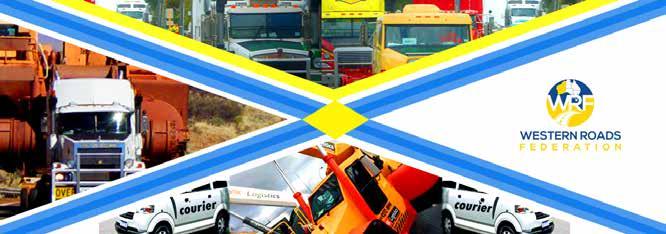

SATURDAY AUGUST 3, 2024
Joondalup Resort Perth, Western Australia
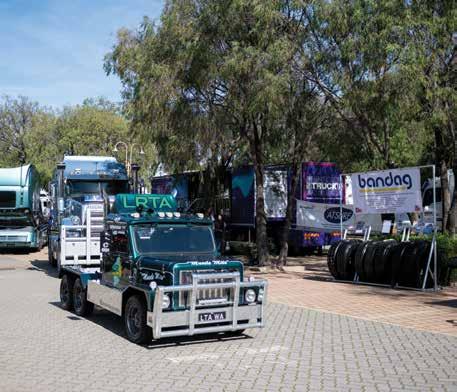




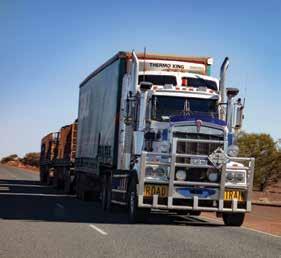
Kenworth
celebrates the
‘backbone’ of the
Kenworth has launched a new video celebrating the multigenerational businesses that form the backbone of the Australian road transport industry.
Featuring a father and son over time, the video talks to the journeys travelled and the stories created by the
people who make this industry what it is. Set against an original musical score, the video was filmed at spectacular locations across Australia including the Great Ocean Road, the Otway Forests, Mornington Peninsula, and Broken Hill.
The music, which features percussion sounds sampled from Kenworth trucks, including an engine cylinder sequence, complements the story of relationships created while doing something that is so often described as not just a job, but a passion.
Michael Long, PACCAR Australia Director Sales and Marketing said he is thrilled the Kenworth video is now ready for release.
“This video is effectively a short film that highlights how important the legacy is that we leave to those younger generations.
“We know the landscape has been challenging for many people for many reasons and this is our small way of saying ‘thank you’ to those people, not only who buy our product, but to all in the industry who continue to keep the country moving through the part they play,” Michael said.
“It is our way of celebrating how important the industry is to us.”
To see the video, please visit youtu.be/Ju PFxlsyHVQ or www.kenworth.com.au/ legacy
Deloitte’s latest report, “Generation AI: Ready or not, here we come!” unveils critical insights from extensive research on AI use with over 2500 Australian students and employees, alongside academic reviews.
This study sheds light on Generation AI, a cohort of digital natives who wield AI to enhance their study, work, and life experiences. With 58% of students already leveraging AI for learning, this generation is poised to revolutionise business practices. The report introduces the Digital Disruption Map, identifying sectors primed for significant AI-driven upheaval, signalling the need for organisations to embrace AI to drive productivity and innovation.
As Generation AI emerges onto the scene, businesses must adapt to harness their potential or risk being left behind.
The report not only highlights key insights but also offers seven actionable strategies for businesses to navigate the evolving landscape with confidence.
To download the report visit content.deloitte.com.au/au-condaegenerationaireport2023-rego-inb-natgated-14082023
By HEATHER JONES
It’s been a little over 25 years now that our company Pilbara Heavy Haulage Girls Group has been training new truck drivers out on the road, in real life road transport. We train them in side tippers, end tippers, general freight, 50 and 100 tonne floats, extendable loads, tankers, and a day or two in a pilot vehicle. We also provide hands on education in tyre changing, basic mechanics and a whole lot more.
Our program is much like work experience, you have a mentor by your side for at least 160 hours driving time and approximately 20 hours in class time.
Our driver mentors talk you through situations and share stories of their various experiences, so that if you come across a similar situation, we hope that story will pop into the new drivers head with the information they need to make an informed safe driving decision.
Our program is much like work experience, you have a mentor by your side for at least 160 hours driving time and approximately 20 hours in class time
For many years, we have been advocating for industry to use the same training approach and train your own drivers. We all know the pool of “experienced truck drivers” is so low that we have a critical shortage of truck drivers in Western Australia.
On Seek, there is consistently upwards of 1000 MC driving jobs alone.
So when we were approached by Fortescue to train new drivers for their roadtrains, we jumped at the opportunity.
This is a 12 month, on the job training program, along with obtaining their cert III in driving operations during the program.
It is for new to the industry truck drivers, people who really have a passion to drive trucks but have not had the right opportunities to do it, or circumstances to get behind the wheel.
We hope to be able to have 24 trained new road-train drivers by the end of this project.
We would like to thank the amazing teams at Fortescue, Red Arrow, and Syncline for this wonderful project where industry is investing in new drivers who receive enhanced training, and go on to have a long and safe career in the transport industry.






premier brake and clutch specialists proudly servicing the states industrial clutch and brake applications.


From major truck workshops, heavy haulage, cranes, the mining industry and more… our team of knowledgeable and qualified technicians share over 100 years combined experience and focus on delivering prompt service alongside the supply of top name brakes and clutchesthroughout Australia and Asia.
With over 20 years in the industry we have a well-earned reputation for the development, manufacture and supply of quality standard and customised designs to suit a wide range of applications.

For the best advice and friendly service contact us today.
+61 8 9353 4411 ■ sales@knightbrakeandclutch.com.au knightbrakeandclutch.com.au

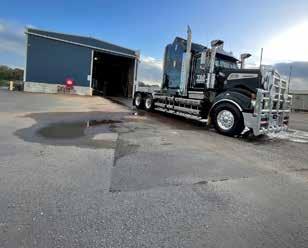





The life of a long distance truck driver is often portrayed and defined as one of being on a lonely highway, driving long hours and listening to the hum of a big diesel engine as we travel this vast country.
This occupation whilst being challenging offers a feeling of freedom and independence with lots of solitude - but something that is hardly ever mentioned in this scenario is truck drivers mental health.
Mental health is a big topic in many occupations especially on mine sites where workers are away from home for long periods of time and work long hours.
Mental health is not acknowledged in the transport industry enough. Truck drivers tend to work hard and give the impression that they and their truck are going just fine.
I believe the stigma associated with mental health is what prevents truck drivers, especially men, from discussing their issues and sourcing help. We think we are tough and bulletproof and if we have mental health issues we tend to keep them to ourselves.
A truck driver can’t show your weaknesses. Whilst mental health is important in all occupations it is significantly more important with truck drivers because of our interaction with other people on the road in a massive vehicle.
Truck drivers have to cope with the stress of management of unrealistic schedules, long hours of driving, fatigue and poor choices of diet. Truck drivers have a higher rate of obesity than most other occupations and it certainly is difficult to keep the weight down with lack of exercise and not a lot healthy options available on the job.
My doctor once said to me that I was a fat truck driver and I should tie a bicycle to my trailer a go for a ride once or twice a day. Whilst he meant well it obviously never happened. I was either busy driving or busy trying to get to sleep.
It’s not a good idea having truck drivers with mental health issues behind the wheel of a truck. Anything like depression and
Australia’s largest survey of truck drivers led by Monash University found half of all truckies suffered psychological distress
stress significantly affects the truck driver’s performance and concentration which are crucial for safety.
Truck drivers are pushed to their limits trying to manage fatigue and schedules plus unpredictable weather and traffic conditions. This leads to stress and eventual burnout which is not good for anyone.
In the transport industry mental health is not a priority but it should be the ‘Number One’ priority. Prioritising our mental health is not only about our personal health but it’s also about maintaining a higher working standard.
If the chain of responsibility was properly applied in the transport industry then we would have more realistic times to complete our trips. We would be better remunerated for the work we do. We would have more time off work for some family life. The flow on benefits would be healthier and safer truck drivers who were happier in themselves.
The stigma related to mental health needs to improve so that drivers can openly acknowledge when they have a problem and have the environment and support network they so desperately need.
Australia’s largest survey of truck drivers led by Monash University found half of all truckies suffered psychological distress. The study found the percentage of drivers under 35 suffering severe distress
was almost double that of the average Australian male of the same age.
It also found suicide had fast become the second leading cause of death for truck drivers under the age of 39.
This is not helped by the fact that truck driving can be dangerous, with drivers 13 times more likely to die at work than any other Australian worker, according to Driving Health.
It’s a real eye opener when someone we know takes their lives due to unforeseen circumstances. It’s nearly always someone whom we least expect. The question asked is if only we had known.
Taking care of our health is as important as taking care of our truck. Both are important for a successful journey.
Truck drivers are the operational backbone of Australia as they deliver essential supplies across enormous distance’s to often isolated locations. The industry is facing a crisis and a shortage of good workers. It is a thankless job but what we do is vital to keep the nation and economy going.
We need to take care of our drivers and seek support from the industry, Government and the general public. Even a simple gesture of thanks would go a long way.
If you or anyone you know needs help
• Lifeline - www.lifeline.org.au – T: 13 11 14
• Kids Helpline - kidshelpline.com.au
T: 1800 551 800
• MensLine Australia - mensline.org.au
T: 1300 789 978
• Suicide Call Back Servicewww.suicidecallbackservice.org.au –
T: 1300 659 467
• Beyond Blue - www.beyondblue.org.au
T: 1300 22 46 36
• Headspace - headspace.org.au
T: 1800 650 890
• SANE Australia - www.sane.org
T: 1800 18 7263
• ReachOut - au.reachout.com
Keep it safe, Ray Pratt.





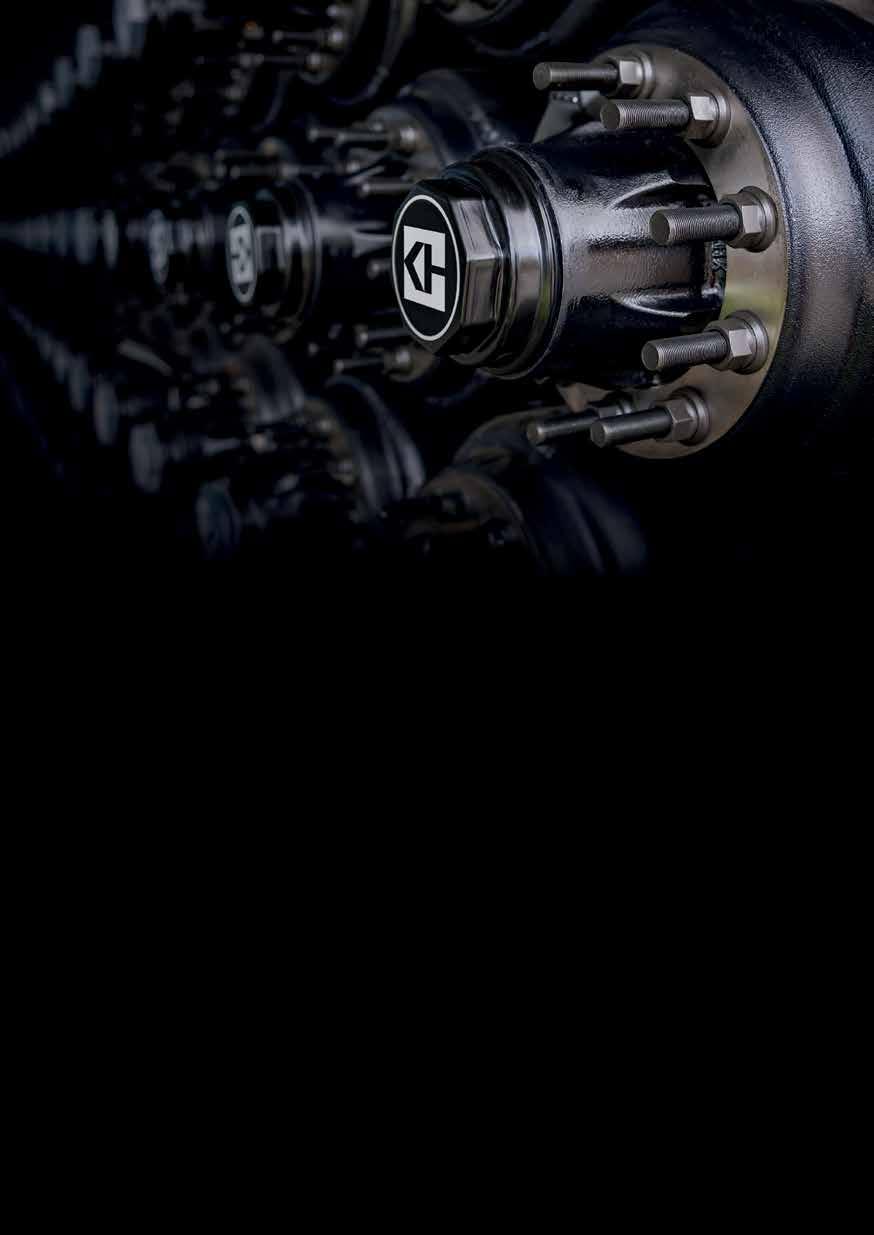
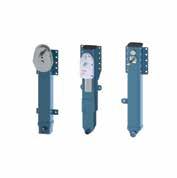





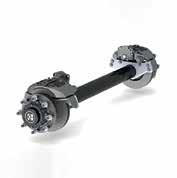

Victoria 13-21 Bliss Court, Derrimut VIC, 3026
Tel -(03) 9369 0000
Queensland 1/15 SeeanaPlace, Heathwood QLD, 4110
Tel -(07) 3372 2223



Western Australia 5 Freight Road, Kenwick WA, 6107
Tel -(08) 9350 6470

ain Roads Heavy Vehicle Services (HVS) would like to advise that, following feedback from Heavy Lift Tow Truck (HLTT) industry representatives and HLTT loading control demonstrations, the Heavy Lift Tow Truck Period Permit Operating Conditions have been updated. The following information was recently
published in HVS Update 14-2024 at www. mainroads.wa.gov.au/heavy-vehicles/ updates/hvs-updates/14-2024/
The previous condition requiring all HLTT’s to be fitted with an On-Board Mass Management (OBM) system, has now been modified. The loading control requirement is now based on the towed mass ratio,
M issed opportunity and a limited scope were the labels given to the Climate Change Authority’s latest paper - 2035 Emissions Reduction targets from Australian transport body Natroads.
The Authority is an independent statutory body established under the Climate Change Authority Act 2011 to provide expert advice to the Australian Government on climate change policy.
As part of Natroad’s commitment to provide frank and fearless advice to the
government, they have called the limited scope of the Climate Change Authority’s (CCA) review on reducing carbon emissions from heavy vehicles a missed opportunity.
“Our recent submission shows that by focussing outside of just electric and hydrogen fuel cell technologies more could be done to reduce emissions and costs in trucking,” they said.
“Australia’s unique road freight industry, with its diverse range of tasks, requires a mix of technology solutions.
While electric and hydrogen vehicles hold promise, they are not the complete solution. Renewable diesel and improved operational efficiencies must be included in the strategy to reduce emissions effectively.
“We have stressed the importance of a cost-effective transition strategy for the predominantly small business-operated road freight sector. Government policies should offer a range of options, enabling operators to select the most suitable solutions for their specific needs. This
which has a direct influence on the risk of the towing operation and the need to manage the mass on the HLTT.
The loading control requirements are now as follows:
1) The permit holder for a HLTT towing a vehicle with a GVM equal to or less than the GVM of the HLTT, must:
(a) Be accredited under the Western Australian Heavy Vehicle Accreditation Scheme Mass Management Module; and
(b) Operate the HLTT in accordance with a loading plan approved by HVS; and
(c) Maintain mass records of each tow, in accordance with the Western Australian Heavy Vehicle Accreditation Scheme Mass Management Module requirements and produce the records upon request to HVS.
2) The HLTT must be installed with an approved On-Board Mass Management (OBM) system, linked to the in-vehicle telematics unit, and monitored via a Transport Certification Australia (TCA) approved service provider, where:
(a) The HLTT is towing a vehicle with a GVM exceeding the GVM of the HLTT; or
(b) The HLTT is towing a vehicle combination where the combined GVM of all the towed vehicle units exceeds the GVM of the HLTT.
To provide adequate time for HLTT operators to comply with the revised requirements, the current 12-month moratorium, due to end on 30 June 2024, will be extended by one month until 31 July 2024. Further requests for extensions will be assessed on a case-by-case basis and will be subject to the HLTT operator demonstrating they are making reasonable
HVS will maintain a list of HLTT operators who have approved loading plans or compliant OBM systems on the Heavy Lift Tow Truck page on our website
efforts to progress towards meeting the requirements.
The following changes have also been made to the Operating Conditions:
- The Heavy Lift Tow Truck Period Permit now also applies to a HLTT towing an unladen motor vehicle to and from a place of repair or an auction yard.
- The Heavy Lift Tow Truck Period Permit also applies when towing a heavy vehicle or vehicle combination under the direction of an Authorised Person. An Authorised Person includes a member of the WA Police, Department of Fire and Emergency Services, Sheriff’s Office, or Local Government Ranger.
- The HLTT may tow an unladen heavy vehicle without control of the towed vehicle’s braking system, provided the combined mass of the HLTT and the unladen heavy vehicle does not exceed the GVM of the HLTT.
- Trailers may be towed in a manner other than that specified in the Operating Conditions, provided
a Safe Work Method Statement is developed and approved by HVS.
- The HLTT may tow a vehicle carrying an oversize load up to 3.5 metres width.
- If available, the HLTT may be accompanied by a Main Roads Incident Response vehicle, instead of a pilot vehicle, to manage traffic when towing a bus exceeding 12.5 metres in length or a vehicle combination within a Central Zone.
- The HLTT is not required to be accompanied by a pilot vehicle in the Central Zones between 11pm and 5am, Sunday to Thursday.
- The HLTT may tow a vehicle that is over-width, as a result of damage, at night up to 3 metres in width, subject to additional lighting requirements.
- Speed restrictions have been expanded so not all vehicle combinations have the same 60 km/h restriction. Some vehicle combinations may be towed at higher speeds.
HVS will maintain a list of HLTT operators who have approved loading plans or compliant OBM systems on the Heavy Lift Tow Truck page on our website. Key stakeholders, such as WA Police, Main Roads’ Road Network Operations Centre, Department of Fire and Emergency Services, Sheriff’s Office and the transport industry, are advised of this list and reminded of their obligations under the Chain of Responsibility.
For further information please visit the Heavy Lift Tow Trucks at www.mainroads. wa.gov.au/heavy-vehicles/permit-orderscheme/heavy-lift-tow-trucks/ or contact HVS on 138 486 or email hvsnetworkaccess@mainroads.wa.gov.au
approach will facilitate a smoother transition to a low-emissions future while maintaining economic viability.
“In addition, small trucking businesses need a cost-effective pathway to lower emissions.
NatRoad continues to advocate for comprehensive pathways and supportive policies to achieve meaningful emissions reductions in the road freight sector. To read their submission visit www.natroad.com.au/ submissions/2024/
In order to encourage business investment, the instant asset writeoff scheme for small businesses will be extended for another year in the latest federal budget allowing businesses with turnovers capped at $10 million to immediately deduct $20,000 from all eligible assets.
The scheme was extended into this financial year in last year’s budget however it has yet to pass parliament.
The opposition wants the tax break to be available to more businesses by lifting the eligibility threshold to an annual turnover of $50 million and the write-off amount increased to $30,000.
The government needs this year’s extension legislated by June 30 and shadow treasurer Angus Taylor said the Coalition would pass it, even if the government refused to make it more expansive.

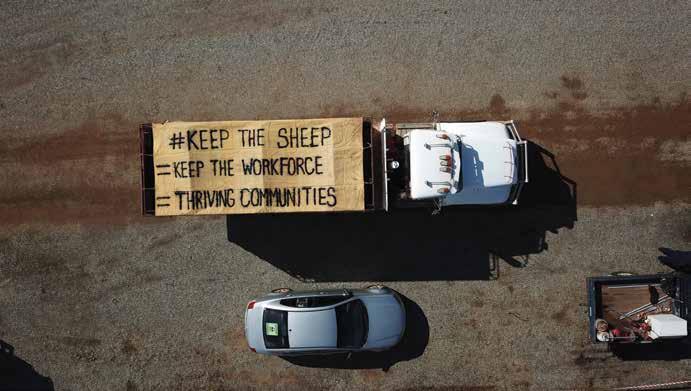
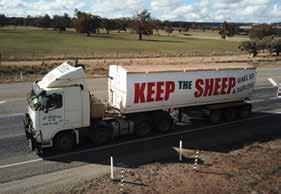
The #keepthesheep revolution hit the road. More than 3000 truck drivers, farmers, shearers and other allied industry representatives and their families converged on Perth on May 31st in protest at the impending ban on live sheep exports.
The ban will have devastating consequences for regional communities. This policy will hurt Australia’s interests in the Middle East as well as the WA economy.
Our high welfare standards will no longer be exported to destination countries.
Rural transporters will suffer a cut to their bottom line in the order of 40% for some businesses.
Sponsorship of community activities, such as junior sports, will dry up and country towns risk becoming ghost towns.
A weak WA sheep sector will mean higher prices for all WA families, adding to the cost of living and proving that this decision will affect everyone.
You can show your support for overturning the ban by signing the petition at www.keepthesheep.com.au
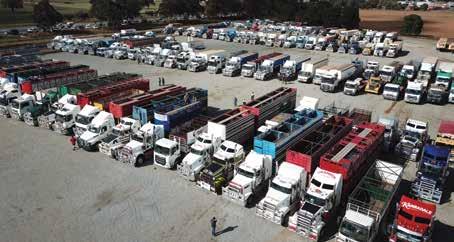

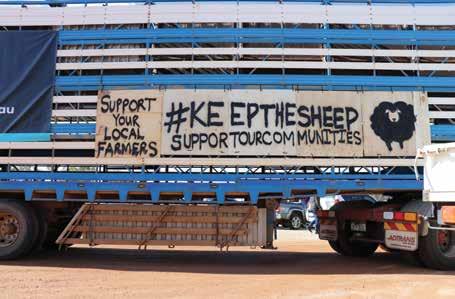

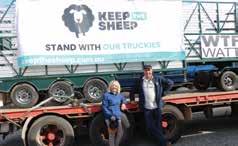

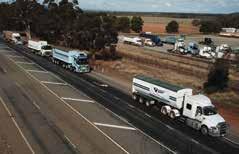

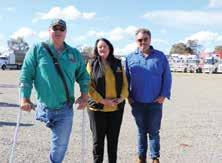
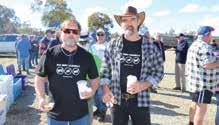
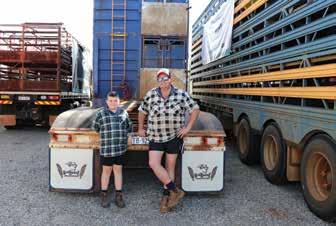
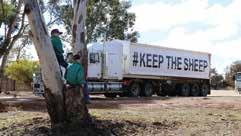

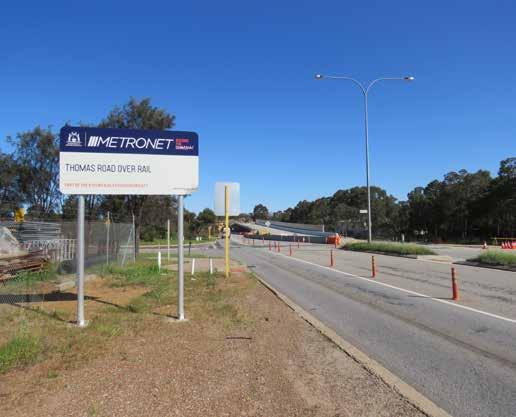
TThe 2024 Budget provides $16.5 billion for new and existing projects across Australia over ten years to improve productivity, liveability, and sustainability.
However, for Western Australia it is METRONET that is the big winner in this budget.
The Federal Government is investing $4.6 billion in 69 new projects, including another $300 million for METRONET to deliver a capacity signalling program in Western Australia.
This also includes $540 million to improve the reliability of the ‘Australian Rail Track Corporation’s’ interstate freight rail network. $150 million of this goes to upgrade the Maroona to Portland Line in Victoria.
Another $10.1 billion is being invested to ensure current projects can be delivered across the nation, including an additional $1.4 billion for METRONET projects in WA.
The Westport project will receive $33.5 million towards planning works to support its development. This includes planning a new port and the connected road, rail and logistics operations required to move container trade from Fremantle to Kwinana.
The Commonwealth’s commitment to the Westport project as part of the 2024-25 Budget will progress planning that is critical
to facilitate construction of Westport, including:
• Upgrading Anketell Road West
• Kwinana Freeway widening
• Roe Highway widening
• Freight rail duplication and level crossing removal
Following extensive consultation, legislation for the ‘New Vehicle Efficiency Standard’ for light vehicles was introduced to Parliament in March. This reform will ensure Australian motorists are able to save money at the bowser and choose from a wider range of more fuel efficient, modern vehicles that are cheaper to run.
The Government will provide $84.5 million over five years to help establish the scheme, a regulator and facilitate credit trading between manufacturers.
As part of their ‘Future Made in Australia’ plan, they will fast-track support for a low-carbon liquid fuel industry, with an initial focus on sustainable aviation fuel and renewable diesel to support emissions reduction in the aviation, heavy vehicle, rail and maritime sectors.
This investment is said to help move the transport sector towards net zero and create new jobs and industry across
Australia, and includes:
• $18.5 million over four years from 2024-25 to develop a certification scheme for low-carbon liquid fuels, including Sustainable Aviation Fuels and renewable diesel, in the transport sector by expanding the Guarantee of Origin scheme.
• $1.5 million over two years from 2024-25 to undertake a regulatory impact analysis of the costs and benefits of introducing mandates or other demand-side measures for low carbon liquid fuels.
• Investing $1.7 billion over the next decade in the Future Made in Australia Innovation Fund, to support the Australian Renewable Energy Agency to commercialise net zero innovations including lowcarbon liquid fuels.
• The Government will be undertaking targeted consultation to identify options for production incentives to support the establishment of a made in Australia low carbon liquid fuel industry.
The Albanese Government say they are committed to increasing road safety and productivity.
Funding has increased substantially for the Roads to Recovery Program, progressively rising from $500 million to $1 billion per year and funding under the Black Spot Program will increase from the current commitment of $110 million to $150 million per year.
To ease the administrative burden on applicants, they have merged the Heavy Vehicle Safety and Productivity Program and the Bridges Renewal Program into a new Safer Local Roads and Infrastructure Program with at least $200 million available each year.
Road safety is a collective responsibility and driver education is an important part of this.
They are providing $10.8 million in 2024-25 for a one-year National Road Safety Education and awareness campaign, and $21.2 million over six years from 2024-25 to improve the reporting of national road safety data via the National Road Safety Data Hub.
This Data Hub will ensure vital and more harmonised road-safety data can be used effectively by everyone, including decision makers in all states and territories.

Four Australian Trucking Association member associations have urged the Australian, state and territory governments to incentivise trucking operators to transition to alternative fuel vehicles.
Western Roads Federation (WRF), Road Freight NSW (RFNSW), NT Road Transport Association (NTRTA) and the Tasmanian Transport Association (TTA) said there must be greater support for industry, with low-emissions freight financing and other commercial incentives.
WRF CEO Cam Dumesny said it was imperative that governments consult transport operators, as the transition to AFVs would need financial support as well as technological, system design and cultural changes across industry.
“Our governments need to ask transport fleet operators what initiatives are needed to foster the move to AFVs,” Cam said.
RFNSW CEO Simon O’Hara said most of its members couldn’t afford to decarbonise
their fleets and transition to alternative fuels such as EV, hydrogen and CNG.
“As an industry, we are committed to helping achieve Australia’s ambitious net zero target. But it’s just not viable for operators, given the current cost-of-living pressures, increased operational costs and the series of barriers they’re facing in switching to low emissions transport technologies,” Simon said.
NTRTA Executive Officer Louise Bilato warned that alternative fuels would add to escalating cost of living pressures throughout rural, regional and remote communities.
Our governments need to ask transport fleet operators what initiatives are needed to foster the move to AFVs
“Realistically, decarbonisation of the freight task across remote Australia will be achieved by increased access for higher productivity vehicles well into the next decade, whilst engineering solutions to address the tyranny of distance catch up,” Louise said.
TTA Executive Director Michelle Harwood said under Tasmania's climate change legislation, the transport industry was a key focus for emissions reduction and was developing the first industry specific emissions reduction and resilience plan in the state.
“Our capacity to support Tasmania's net zero status now and into the future depends on a clear transition plan that acknowledges the nature of the transport task, the realistic alternate fuel options available for adoption, and the economic impacts of increased costs of alternate and low emissions transport services,” Michelle said.
The call followed a report by Curtin University logistics researcher Samson Fu.
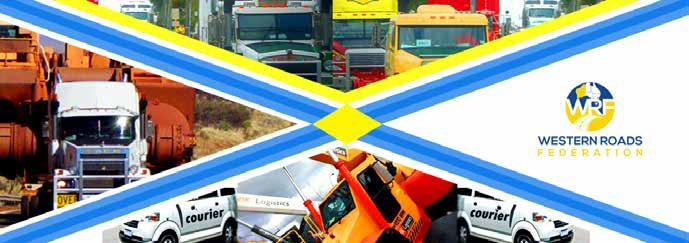
Western Roads Federation has been formed to give a strong unified voice for companies who use WA roads for commercial benefit.
Western Roads Federation is a membership driven organisation. If you believe in the industry and what you do, then make sure your company is a member, and get involved.
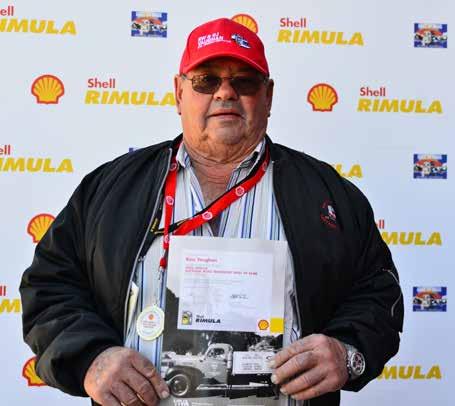
Ross William Vaughan was born in Busselton, Western Australia on the 20th December 1942. His wife Rita Joy, whom he married in 1964, came from Geraldton. By the time he married, Ross had already been working in the trucking industry for seven years.
Ross’s life in trucks started in 1957 when he was just 16 years of age.
He worked for Ken McPherson carting copper from a mine in the dry and desolate outback from Thaduna to Meekatharra in the Gascoyne region of WA. This job included a mail run from Meekatharra to Wiluna, a distance covering around 200 kilometres.
Ross lived and worked on a farm at Northampton for two years before he and Rita were married during which time he drove a truck carting superphosphate for the farm.
The truck at that time was a green 1948 International Dodge. Ross purchased a Volvo F86, one of the first, in 1972. It was the very first of the 74 Volvo trucks of various models he would own up to the present day. Vaughan’s current fleet of ten trucks includes Volvo, Mack, Sterling, Kenworth and Freightliner.
Long distance haulage is the cornerstone of Vaughan Transport. The business was

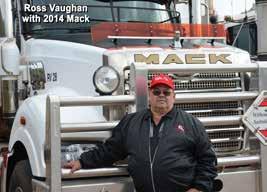
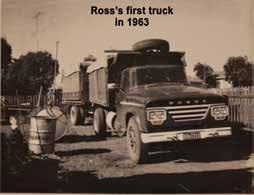
founded in 1965. One of his contracts in the early 1980s was a four to five day 4,000 km run from Perth to Darwin and return. This job lasted about five years.
From 1985 to the present day Ross’s business transports a great variety of loads from Perth to Bunbury, Port Hedland, Karratha and many other destinations.
Over this time he has experienced some amazing trials and tribulations. One memorable trial was being stuck at Fitzroy Crossing with his triple roadtrain and ten other trucks from the 1st February to 20th May 1983 (three months) due to major flooding of the Fitzroy River. They only had CB contact with his family and the outside world. They survived by living off the food they were carrying to Darwin.
A major highlight was when Volvo Sweden sent a film crew to Western
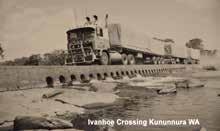
Australia in 1983 to do a documentary on roadtrains; this resulted in an award winning documentary in countries such as Germany and Sweden.
Ross and his wife Rita are the current directors of the business which is also known as Pinto Pty Ltd. They have stepped back from the day to day running of the business and have handed the reins to their son Gavin Vaughan who has over 40 years transport industry experience under his belt.
Ross and Rita are well respected among their peers in the industry.
Carol Messenger
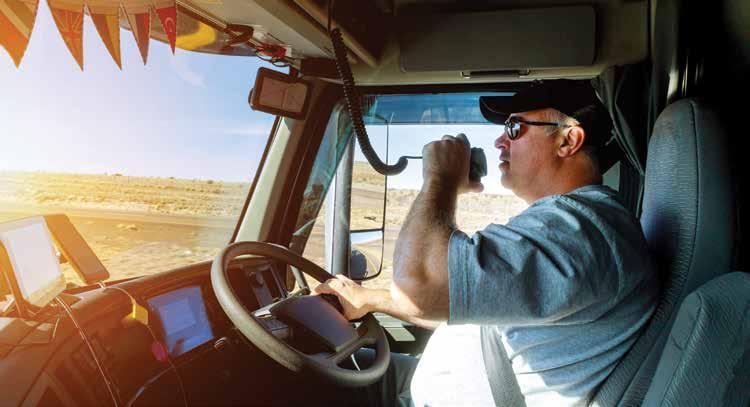
t is fair to say that everyone in the transport industry has been reeling with the increase in fatal head on accidents, roll overs, a plethora of other incidents and just plain stupid impatient behaviour from road users in general.
The fatalities should never have happened and many are left asking why and what can we do to prevent them happening again?
The ‘why’ is hard to know as the parties concerned are deceased but it is obvious that one truck strayed across to the wrong side of the road? Exactly how and why this happened is the big unknown although the rumours abound including the ethnicity of the driver at fault.
Without any knowledge or proof there seems to be an immediate assumption and name calling from some, “It must have been Raj” or “It was Putt Putt Transport”.
It seems to me that there have always been a lot of bad feelings with regard to drivers from the subcontinent and they are unfairly lumped in as a whole and accused of being inexperienced, rude, arrogant, untrained and just plain dangerous.
The way I see it is ‘some’ have simply not learnt our Aussie truckie culture.
The Aussie truckie culture is one of mates helping each other out. A culture where truckies call out and chat as you pass by, the catch up over a meal, the stop and check on someone broken down. This is the way that we were brought up.
As you see that truck approaching, pick up the CB and say G’day driver. A few words of greeting may just be enough to re-centre the driver’s attention whilst he/she passes you
One point I would like to make from mine and others experience is that simple communication via the CB is lacking. There is no casual chat – a ‘G’day’ or ‘how are you doing’ or even ‘bring her round’ and this definitely causes a divide.
Any kind of divide is dangerous so we all need to work together to fix it.
It can get lonely out on the road and yes it can get boring at times, miles and miles of sameness and it is easy to lose concentration or to zone out or drift off especially in the early hours of the morning. The condition of the roads, the speed and size of trucks these days and that one moment of inattention can sign your death warrant.
We are all looking for ideas to help prevent an accident when two trucks pass by.
What about if we just said G’day? As you see that truck approaching, pick up the CB and say G’day driver. A few words of greeting may just be enough to re-centre the driver’s attention whilst he/she passes you. Bring back the comradery and just add a little more friendliness like it was in the past. You hear the regulars greet each other as they pass by, a quick catch up on news or road conditions but on the whole everyone seems to be in their own little bubble and maybe that’s the problem.
Truck drivers are a special breed of people; it is a tough life away from family and friends. Hours and hours by yourself, working through your thoughts as you drive. Imagine if everyone just reached out and said G’day as you passed.
Am I alone in thinking that would be a positive thing? It’s like a smile – when someone smiles at you it’s hard not to smile back – it just puts a little light in your life, a lift in your step. And just maybe it could bring someone’s concentration back – which just maybe could help prevent an accident.
We have to do something to slow down the number of accidents so anything is worth a try. So give it a go – Just say G’Day –let’s just reach out and reconnect with each other and if that simple act of connection can re-centre someone’s attention on the road and their job, then we will all be winners, and just maybe it will get a few more of us home safely in one piece.
By Cliff Graham This is ‘The Outback’
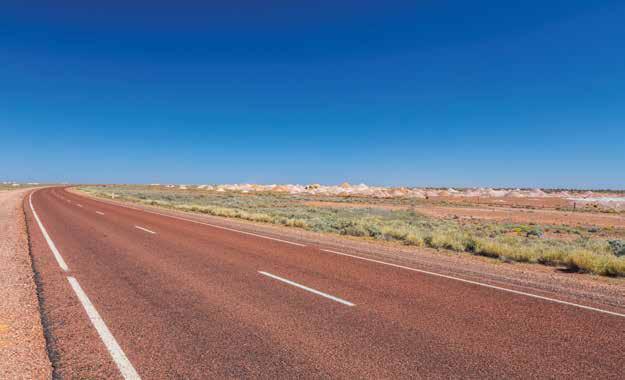
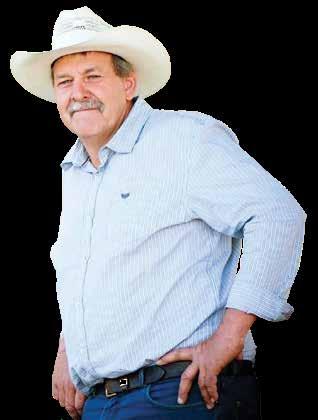
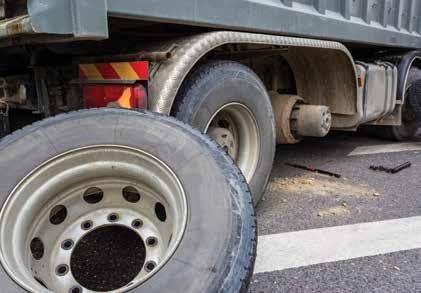
When I got my semi/roadtrain license some 43 years ago, there were no training programs.
When I got my license, the sergeant said to me as he was writing it out after a quick drive in the truck to the newsagents to buy that day’s newspaper, “Don’t make me
Albany puts a ring on it as major project officially opens
regret giving you this”. He sat at his desk eyeballing me and tapping his pen in my direction.
I never ever forgot those words. Did I stuff up and make mistakes –absolutely, but I’ve always tried to be as professional as I could and owned my mistakes. This was
Albany Ring Road - the biggest road infrastructure project ever undertaken in Western Australia's Great Southern region - has officially opened.
The ring road has delivered a freeflowing, 11-kilometre connection between the original section of Menang Drive east of Albany Highway and Princess Royal Drive, including three grade-separated interchanges at Albany Highway, South Coast Highway and Hanrahan Road.
The northern section of the ring road, between Albany Highway and South Coast Highway, as well as the new Frenchman Bay Road interchange, opened to traffic before Easter, resulting in an immediate improvement in traffic flow.
The final section between South Coast Highway and Hanrahan Road/Frenchman Bay Road officially opened to traffic on Sunday, 19 May.
The new road will divert heavy vehicles
the culture of most operators at the time.
Of course there will always be people driving trucks who shouldn’t be allowed to drive a wheelbarrow, but most operators knew they weren’t perfect and made mistakes. From this was born a willingness to help each other with our ‘stuff ups’ no matter how bad they were and there was an unwritten rule that no one drove past any other truck with its bonnet tipped up or the cab tilted without stopping to help.
around Albany, improving freight efficiency and underpinning the long-term economic viability of Albany Port.
It will also significantly improve traffic flow and safety on the existing road network by reducing heavy vehicles on Albany Highway, South Coast Highway and Chester Pass Road.
There are currently hundreds of trucks moving to and from the port each day, which increases significantly during harvest. The new ring road will remove these trucks from the local road network.
Upon opening, the completed ring road will be known as Menang Drive, in recognition of the Menang Noongar people, the area's Traditional Owners.
The project has invested approximately $54 million in Great Southern businesses, supporting local jobs and contracting opportunities.
$6.4 million has been spent on
Nowadays, most trucks won’t even slow down if they see you on the side of the road changing a tyre and it is a rare thing for another truck driver to wave to you.
Why? I think much has to do with the governance and mandatory allocated rest breaks where drivers keep going until they are instructed to stop. It seems like the whole industry is ‘dumbed down’ to comply with someone else’s regulations and expectations.
I drove for a small operator and due to unforeseen circumstances his business shut down which gave me the opening and opportunity to start my own business. I bought a truck and trailer and as time went on I was able to purchase more old trailers and do them up to be mechanically sound and reliable. After a few years of perseverance, I was able to have enough contacts to start offering a weekly freight service from Brisbane and Toowoomba to my home town.
I transported ‘anything’ from a carton to a shipping container and offered a service to a couple of small towns where I had depots; and did lots of running around picking up freight.
There was a time when a young bloke named ‘Daz’ from the high school approached me to be able to do work experience for a week with me.
“Absolutely”, was my excited response. It’ll be good for a young fella to see how food and hardware etc. just don’t appear
Aboriginal businesses and suppliers, while 10.5 per cent of the construction workforce hours have been completed by local First Nations people.
Meanwhile, the State Government has committed for a new flyover at the intersection of Menang Drive and Chester Pass Road.
The new flyover will maximise the efficiency of the Albany Ring Road route by providing free-flowing access from Chester Pass Road all the way to the port.
The $225 million project is jointly funded by the State and Federal Governments, with the Australian Government contributing $173 million, including an additional $33 million funded in the 2024-25 Federal Budget.
Federal Minister for Infrastructure, Transport, Regional Development and Local Government Catherine King said, "It is wonderful to see the Albany Ring Road,
When I got
my license, the sergeant said, “Don’t make me regret giving you this”. He sat at his desk eyeballing me and tapping his pen in my direction
in shop shelves. When the time came closer, there was some scepticism from teachers saying it wouldn’t be fair to just sit in a truck for a week. I told him to tell the teacher that he would document everything he did during his time with me.
So I considered a few different things that needed to be done so he could have a variety of tasks to do.
On his first day, we started by pulling a couple of hubs off a trailer and replacing the brakes and bearings so Daz could get to see a bigger picture of what we do to ensure goods end up on the shop shelves.
Back then I had convertible tipping trailers and would cart grain down to Brisbane or Toowoomba. We set the curtains up on the gates to load the grain on two trailers, loaded the grain, tarped the load and by then Daz was getting puffed. However he stuck with it and we drove
There are currently hundreds of trucks moving to and from the port each day, which increases significantly during harvest
to Toowoomba where both loads were unloaded. Then we stripped the trailers down taking off the tarp and rolling it up, took the curtains off inside the gates that were holding the grain in and drove to Brisbane to begin the pickups - loading the freight to take back to our country town destination.
All during this time I explaining to Daz that we need to do it in a way that ensured nothing fell off nor was broken by anything else on the trailer. Even for a 14/15 year old boy I was astounded that he quickly understood that we actually have to go to so much trouble to keep the freight safe and secure.
We then drove 700 hundreds kms to the first town to pick up pallets of beer, groceries, dog food and fencing materials. More tarping then finally onto home our home destination.
By then I was sure poor Daz was possibly wishing he was doing anything but coming with me for his work experience.
However I know he learned valuable life lessons and got more experience in handling freight than most people are interested to care about.
After Daz’s week long work experience he humbled a number of teachers by explaining how much ‘effort’ people in the transport industry go to and how much regulation and compliance the transport industry must adhere to, to ensure things that people use every day are delivered safely.
a critical project for Western Australia's Great Southern region, become fully operational.
"This project is safeguarding the long-term viability and efficiency of the Port of Albany by providing free flowing road access.
"This will ultimately improve
competitiveness of exports from the region."
WA Transport Minister Rita Saffioti said, "The Albany Ring Road is a once-in-ageneration project for the Great Southern region, providing a free-flowing freight connection around the city and taking heavy vehicles off existing routes.
"The issue of heavy vehicles having to use local roads to access the port has long been a concern, which is why our Government made this commitment to the people of Albany and the Great Southern.
"Removing heavy vehicles from the existing local network will improve safety on Chester Pass Road, Albany Highway and South Coast Highway and enhance amenity for local residents and visitors alike.
"The new ring road will support the future economic growth of Albany and the Great Southern region by making truck movements to and from the Port of Albany as efficient as possible."
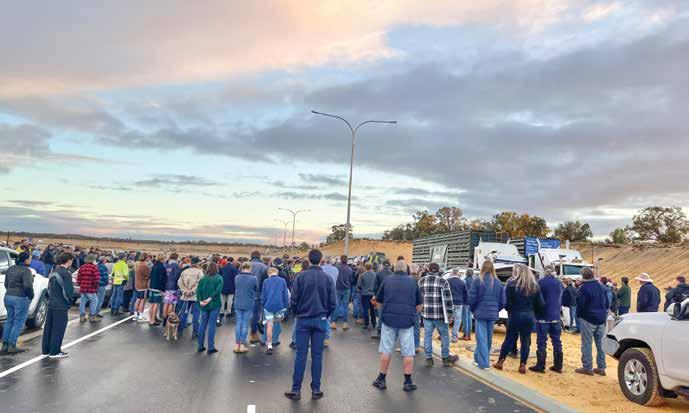

Ihave just returned home to our cattle station 80km northeast of Mount Magnet with my four young children after we attended the protest in Perth on Friday May 31st calling for the Albanese Government legislation banning live exports to be scrapped.
In all my 40 plus years on the land, I have never felt so anxious about my family’s future or more disillusioned by the poor policy decisions being made by both the state and federal Labor government’s that stand to decimate the profitability of family farming and pastoral businesses like ours and the regional communities across WA.
I had an immense sense of pride as the 1300-strong convoy composed of rural trucking operators, farmers, pastoralists, livestock agents, shearing contractors and country businesspeople rolled through the Perth CBD. Slim Dusty classic, “The bush has had enough” would have been a fitting soundtrack to the day.
We have had enough and the death knell for the $77million dollar live export industry comes at a time when many farmers are now contemplating shooting their sheep as a result of drought coupled
with prolonged and depressed market conditions.
The loss of the live export industry will cripple the entire supply chain affecting service providers like trucking operators through to livestock feed providers, agronomists, agricultural professionals such as shearers, livestock agents and the list goes on.
And cattle producers like me know we are next on the hit list.
Back-room deals done between the Labor Party and the Animal Justice Party revealed recently that, in conjunction with the Labor Party, the AJP was proud to deliver the knockout blow to live export and in an emailed statement, would be ‘ensuring Labor enshrines the end of the trade in law before the election.’
This follows a raft of Labor government policies and legislation in recent years aimed at removing essential services, eroding basic rights, and making it harder than it’s ever been to run a livestock business in WA.
For me, it all started with Education Minister Sue Ellery announcing the closure of Schools of the Air in 2017 as part of a $64 million suite of budget cuts while the then McGowan Government celebrated funding for a new $70.6 million-dollar inner city school for Subiaco in the same week. Thankfully a fierce and coordinated public backlash prompted a speedy reversal of this
By lara Jensen
appalling decision on January 11th, 2018.
In November 2021, after Premier Mark McGowan secured a majority in both houses of parliament, despite repeated denials electoral reform was on the agenda, we saw him use the Labor party’s large parliamentary majority to make sweeping changes to WA’s electoral laws, slashing regional representation with the “one-vote, one value” system rendering the whole state as a single electorate electing 37 members rather than Upper House MPs being chosen from six regions of varying size. The standards of our roads, schools and hospitals are all dependent on our level of political representation and slashing it is a move that has further eroded these standards in the regions. The latest State budget saw a $2 billion dollar blowout in the cost of Metronet while my hometown of Mount Magnet and numerous other regional country towns are dealing with ageing and inadequate health infrastructure, reduced medical services and regional roads desperately in need of repair.
So, I sit here, after another sleepless night looking at my four young children, my youngest a baby and desperately wondering what point is there to try and carve out a life in the bush when Labor Government’s continues to impair our right to basic services, and our ability to be proud world leading livestock producers through one piece of crippling legislation at a time.

Following on from the story in the June edition entitled, “Will driverless trucks make a meaningful impact in our lifetime?”
you had a lot to say and echoed the story with how would they handle issues on route, breakdowns, tyre changes, cargo handling, driving conditions, secure the freight… the list goes on.
Whilst it looks so far that the autonomous trucks are working well in the regions, there was a lot of scepticism about their safety and ability to perform the task in the metropolitan areas.
So let’s take a step back and look at how well unregulated autonomous vehicles are operating in North America and the headline that greets me is, “Angry mobs are torching self-driving taxis in the US”.
Cruise and Waymo who is owned by Google’s parent company Alphabet both currently operate driverless taxis in Los Angeles, Austin, Phoenix and San Francisco.
They began testing in 2017 and both companies have invested billions of dollars into developing their autonomous technology.
Whilst the technology has had some successes the problem they are finding is that self-driving taxis can become confused
by traffic situations, map errors, road works, software glitches and hardware issues like having their sensors obstructed.
The way they are programed is their safety default is to stop and sometimes this can be in the middle of an intersection. The stop can be upwards to half an hour causing traffic back up before the car thinks through the dilemma and goes on its way or an operator from the company must remotely move the car, or a person must come and physically move the vehicle.
If there is a passenger in the car, they have limited options and all they can do is wait, call the helpline or exit the car.
The technology has caused laughter and frustration such as when in Phoenix 12 Waymo’s turned up in the same street at the same time causing a traffic jam and in San Francisco one drove straight into wet concrete.
Emergency Services are becoming increasingly frustrated when self-driving taxis block their way and there have been some terrible accidents such as in 2023 one operated by Cruise was involved in a serious accident involving a pedestrian in San Francisco. The pedestrian was hit by another car throwing them into the path of the Cruise taxi which then dragged
them some distance before stopping. The pedestrian survived but received serious injuries.
From this incident, the inevitable happened – the Californian government suspended Cruise’s license and the company has put operations temporarily on hold as it restructures the business and reviews safety.
Since 2018, both Waymo and Cruise have reported their autonomous cars were being attacked by the public from having their tyres slashed to having rocks thrown at them.
These random attacks have become more organised over time with groups encouraging the disruption of their networks.
Some people have taken to ‘braking hard’ whilst in front of one to see if it could react fast enough and there are videos showing how to immobilise one with just a traffic cone.
So why are people so angry about this technology? In a nutshell they are deemed by many as dangerous and a hindrance to traffic.
On another subject, a Tesla owner recently shared a terrifying moment when they almost crashed into a moving train. They alleged the car’s semi-autonomous driving system did not deviate from the collision course.
The footage was uploaded to the Tesla Motors Club owner’s forum and showed the Model 3 approaching a level crossing in heavy fog. The driver claimed the ‘Full SelfDriving’ (FSD) was in use at the time.
The Tesla’s built-in cameras showed the crossing gates closed with flashing lights and the car allegedly did not slow down or change course until the driver took over the final seconds before the crash. The car struck the gate and the driver claimed that this was the second time the Tesla had attempted to drive directly into a passing train while in FSD mode.
This is interesting in itself regarding train illumination with the government pushing for drivers to be more responsible – when apparently a computer has trouble distinguishing them as well.
Thankfully, Australian regulations do not allow private vehicles to drive fully autonomously – yet. The Automated Vehicle Safety law comes into effect in 2026 and whilst testing is taking place if autonomous passenger vehicles are causing this much mayhem in the US, surely Australian governments should not be rushing to put autonomous heavy vehicles on metropolitan roads you would hope.


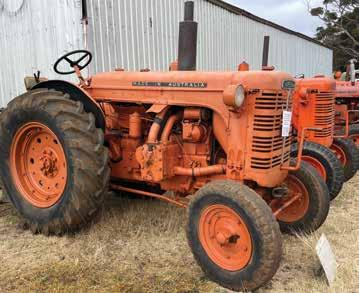
By KEVIN TOOVEY
Tracmachs south west branch hosted the annual Lights on the Hill event in Brunswick Junction this May. This year’s focus was the 75 year anniversary of Chamberlain tractors. It has been that long since the first 40k Chamberlain's came out of the factory in Welshpool. On display was one of the two prototypes for the 40K tractors. The one pictured belongs to Kevin Martin in Williams the other one is on display in the Whiteman Park museum.
This year’s event was held in near perfect weather conditions. We have also become accustomed to a wellrun event with food and drinks available to buy and a nicely decorated shed with table and chairs where you can sit down and eat. Another option is to sit outside in front of the fire and watch the tractors and bulldozers work in the paddock.

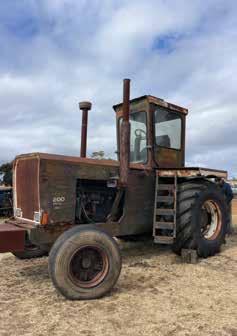

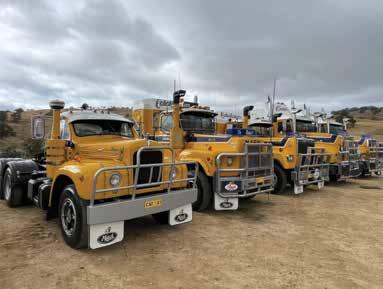

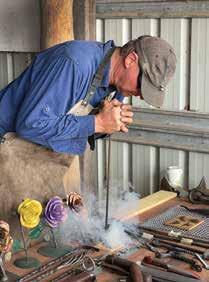


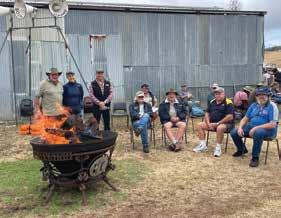
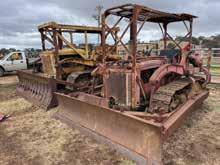
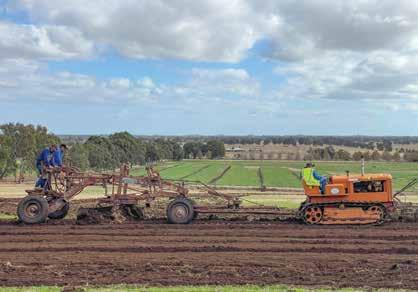
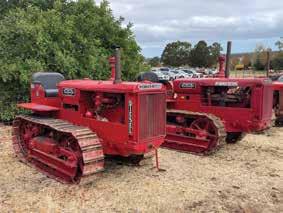
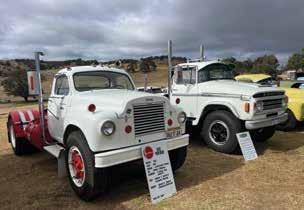


By Russell McKinnon

The February 25 Committee of Management Meeting decided to enlist the services of an independent minute taker at future meetings. Training Manager Roger Bradshaw attended the meeting and stated that training numbers were now on the rise following the Global Financial Crisis that started in June 2009. Dangerous goods training, in particular, was pumping. However, Transport Forum was seen as the “Blue Collar” trainer and more needed to be done to lift out of this area, according to Peter Beach.
Kerry Craig resigned as Chairman of the Freight Division at the February 25 Committee of Management Meeting, due to work pressures and was replaced by Peter Beach.
Passenger Services members Doug and Cheryl Sharpe of Margaret River, retired after 35 years’ membership of WARTA and Transport Forum.
The July 8 Passenger Services Division
Annual General Meeting at Ascot Racecourse was well attended and 13 buses were on display for members to view. Minister for Transport Simon O’Brien was in attendance as was Nigel Hallett MLC. The Minister stated that in his first year of office he had sorted the air conditioning issue as well as introducing automatic transmissions as the standard and the full price of accessories. It was reported that Jack and Lurline Lydiard had retired after 40 years in the industry. The Lydiards were invited to the Awards Evening, but they declined “due to old age” as Jack was over 80 years of age. Chairman Ian Harrower said that while air conditioning, automatics and accessories were a win, the Division was still fighting for repairs and maintenance and the removal of banding, which sees some contractors gain kilometres, but lose money; and unsealed road running; tendered contracts. Ian stood down as Chairman after three years in the role and three as Vice-Chairman, and was replaced by Vice-Chairman Ray Gannaway. Dennis Sutton stepped up to the ViceChairmanship.
The Transport Industry Awards were another great success with the following winners: BP/Castrol Professionals Driver of the Year, Matthew Bailey (Mitchell Corp, Port Hedland); CGU School & Community Bus Driver of the Year, Rosemary Tulloch (Corrigin); NTI Transport Woman of the Year, Wendy Clarke (AirRoad); Transport Forum WA Professional Pilot Operator, Lynne Kennedy (LK Piloting); Department of Consumer & Employment Protection — Resources Safety Dangerous Goods — Company Innovation of the Year, EVOL LNG; Future Leaders, Daniel Bull (Mitchell West) & Wade Jolly (WAFL/Silk Logistics Group); Outstanding Contribution to the WA Transport Industry, Allan Price (Busselton Freight Services).
The September 23 Committee of Management meeting heard that dangerous goods and load restraint training was the major revenue source for the Forum. TFWA was beaten to taxi training on offer by RAC – DTEC. The tendering process for taxi training was flawed, the meeting was told, and that the Forum would pursue the matter with the relevant authorities. The total value of the tender was in the region of $250,000. A price-cutting war was being waged for forklift training presently.
The November 25 Committee of Management Meeting discussed Centenary celebrations and a luncheon on March 1, 2011 with David Galbally QC as the guest speaker. The topic will be Law & Business and will be aimed at the proposed Compliance and Enforcement Legislation.
The meeting also discussed the rebranding of the Transport Forum back to Western Australian Road Transport Association because of its historical connotations and the need to protect the name so non-related parties could not take commercial advantage.
There were 193 deaths on WA roads in 2010.

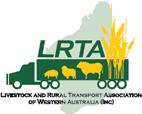

The Livestock and Rural Transport Association of Western Australia (Inc) is the only transport association in WA specifically representing rural transporters.
We are a strong voice for rural WA, ensuring that policy decisions support the viability and safety of rural transporters, primary industry and the communities they service.
Members of the Management Committee are hands on business people, most of whom would drive a truck weekly and travel on nearly every road in WA’s 150,000 km road network in the course of a year.
This close proximity between transporting operations and the advisory role means that representatives of the Association are at the coal face and as such are able to provide that all too rare practical hands on advice in committees, consultative forums and meetings.

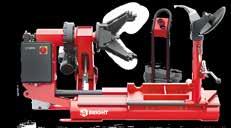
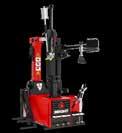

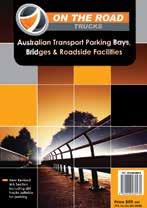

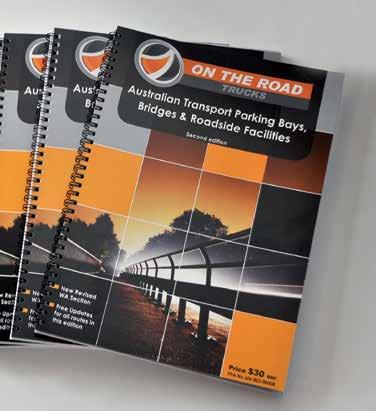




Behind everything you do, are transport workers - delivering our food, fuel and online shopping, as well as taking us to school, work and on holidays. And behind them is TWUSUPER, the industry super fund for the people who keep the country running.